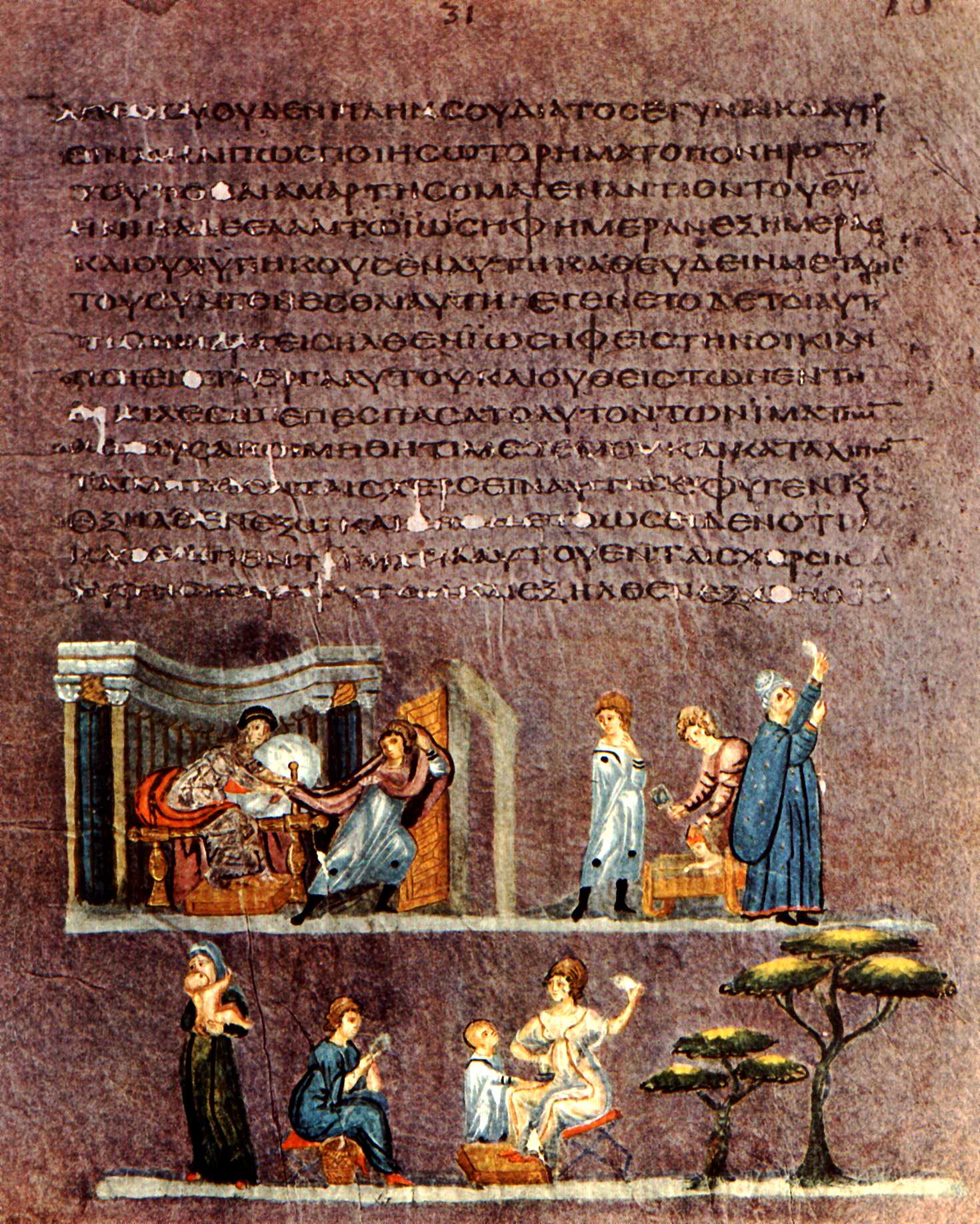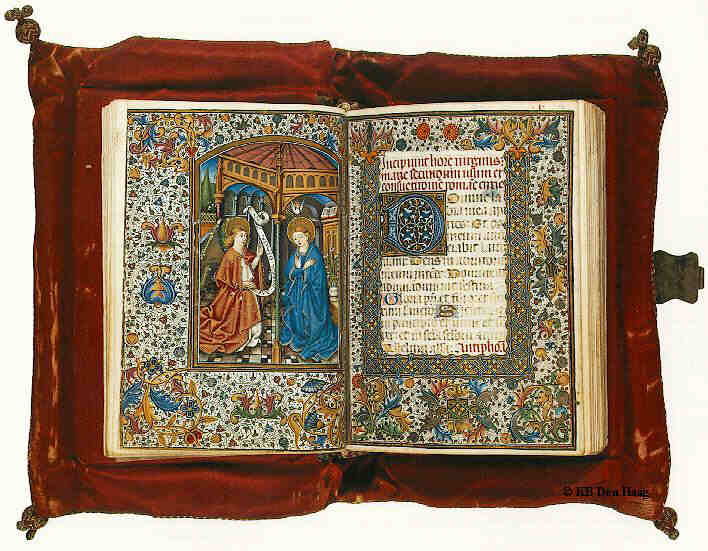If a picture is worth a thousand words, then why don’t books have more of them?
Books that aren’t intended for fourth graders, I mean. Â Seriously, in the early dating/infatuation phase of books and humanity, the uppercrust was obsessed with pictures books, which scholars refer to as “illuminated books”.
Just take a gander at some of these beauties from the early history of books, when they were codexes, barely out of their puberty papyrus phase….

This page is from the ‘Vienna Genesis’, which scholars date to mid-sixth century Syria.  It is a gorgeous  PURPLE dyed codex with silver writing.  It demonstrates how sixth century books were not merely illustrated, they were also color coded!  Purple meant that you were rich and brown meant that you had spilled beer on your book during the last round of Byzantine festivals.  This page shows the temptation of Joseph with that slut Potiphar’s wife, which landed him in prison :/  And then landed him in the position as Pharaoh’s go-to Grain Guy, which eventually led him to place a silver cup in one of his brother’s sacks (which is less weird than it sounds…).  If you don’t know the story, you should read it!  In terms of biblical narratives, it takes up thirteen chapters in the book of Genesis and sets up the conditions of the Israelites in Egypt which forms the kickass sequel to Genesis….the book of Exodus!!
But moving on in our history of awesome picture books….

This is the ‘Chi Rho’ page (the two Greek letters that spell the nomina sacra for ‘Christ’) of the Book of Kells which dates to roughly 800 AD (or possibly earlier). Â In addition to beautiful Chi Rho pages such as this, the entire work contains other similarly adorned pages full of animorphic figures and colorful Celtic interlace designs.
Jumping ahead six-hundred years, we stop upon a book of hours, which was a type of devotional book used by medieval Christians. Â This one is from Valencia, but was most likely produced in a French workshop in the fifteenth century.

Jumping ahead three hundred years, we come upon the watercolor poetic works of William Blake, who was not merely a stellar poet and storyteller, but was also an excellent watercolor artist as well.

Yet another instance where illustration meshes with text in a beautiful way.
There are countless other instances of illustrated works throughout the history of manuscripts, print, and literature. Â My charge to you (if you think you are currently creating the next great piece of literature) is to take the pictorial plunge and add illustrations! Â We live in a visual culture. Â And who knows? Â Maybe now that we’re out of the prime age of watercolor and illuminated manuscripts, perhaps it’s time we started using vectors and programs like Photoshop to make our literature both intellectually and visually appealing again.

